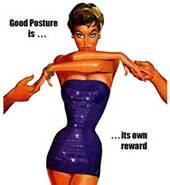The Childhood Obesity "Epidemic"

You can’t click on the internet without being smacked square in the kisser with a headline about a fat kid epidemic in America. It seems that while we’ve been busy working out, cleansing and choking down kale salads our kids have blowing up like little balloons. Sociologists, nutritionists and societal know-it-alls are beating their heads against the vending machine trying to figure out why this is happening. Theories abound. Let’s examine some of the most popular ones.
Ignorance: Kids and their parents just don’t know any better.
This is the argument you hear from post graduate health zealots. If it were up to them they’d have government yahoos monitor everything we feed our kids. Far-fetched? Not really,they've already started. Over the past few years there have been at least 76 documented cases of elementary school lunchroom monitors confiscating lunches and sending kids home with letters outlining what is and what is not okay for little Becky’s lunch box. Do schools really have this kind of authority? Well, at least one of our Supreme Court Justices (Kagan), believes that our Constitution provides for such activities. Trust me; a government who can tell you what you can eat is a government that’s too big to swallow. As for me, they can have my carne asada burrito when they peal it from my cold, dead fingers.
What are they thinking anyway? Do they really think we are so stupid that we don’t know that there is a nutritional difference between sushi and a bag of Fritos? Does it take a master’s degree to know that Twinkies and raw almonds are not nutritionally equal? I’m not sure it’s arrogance or ignorance but the nutrition Nazis think we’re morons.
As a culture we know more about nutrition than any other in the history of the world, yet we’ve never been fatter. Is lack of education really the problem?
It’s the gluten and dairy products – “humans can’t digest them”.
It’s true that celiac disease is a real thing and those suffering from it truly need to avoid gluten. It’s also true that celiac disease is extremely rare. Statistically speaking, it’s not like one kid per class has it or one kid per school, it’s more like one kid per district. Anti-gluten websites often sight a study from a few years ago indicating that 1 in 133 Americans have celiac disease, however when you examine the study itself you find that the study was populated by subjects who already suspected that they suffer from it. So what the 1 in 133 means is that of those who believe they have celiac disease 1 in 133 actually do. That’s like having a group of people with broken legs take dance lessons and concluding that 1 out of 2 people can’t learn the electric slide.
All that being said, cutting out or limiting gluten will most certainly result in weight loss for the simple reason that most snack foods and many prepared foods contain gluten. Cutting it out is a great way to drop a few pounds but it’s unlikely that gluten is the source of the childhood obesity problem.
Fast Food
The amount of fast-food kids consume is definitely part of the equation. When I was a kid fast food was a rare treat; today it’s a staple. According to the Pew Research Center there are about 160,000 fast food restaurants in America today, that’s about 4 for every single high school. These are visited by over 50 million people per day. That’s a lot of chicken nuggets. When kids aren’t eating Whoppers they’re eating other prepared foods that are almost as bad. About 34.9% of the daily calories in an American diet come in the form of restaurant food or foods prepared outside the home. We eat out a lot.
We all know that this stuff lacks nutritional value so why do we eat there? CBS News wanted to know just that so it partnered up with an actual researcher, Sarah Rydell, MPH, and the University of Minnesota. Together they surveyed 600 fast food customers asking them to rank written statements from 1 to 11 the biggest reasons they choose fast food. Here are the top five: 1.Quick. 2. Easy to get. 3. It tastes good. 4. Its inexpensive. 5. Too busy to cook. “Nutrition” was included in the survey but ranked dead last – indicating that no one is under the illusion that fast food is healthy.
GMO’s (Genetically Modified Organisms)
GMO’s have gotten a bad name of late and I don’t blame people for being suspicious. The term ‘genetically modified’ just sounds evil. It conjures up images of cloned sheep with pipes sticking out of their necks and ears growing on the backs of lab rats, but it doesn’t involve any of those things. All it really means is that science has been able to speed up the process of cross breeding plants which man has been doing since the beginning of agriculture. Back in the day some farmer decided to cross one type of wheat that tasted really good with another that was that didn’t taste as good but it was more resistant to disease and he created a new breed of wheat that tasted better and was more stable. This process worked fine but took years. Today companies like Monsanto are able to combine the most desirable genetics of lots of different wheats together in one plant in only a few months. Thanks to genetically modifying foods we can grow 8x the amount of food we were able to produce just 50 years ago.
If you’re under the age of 35 you have been eating GMO’s in one form or another since you were born.
So,is there any way that genetically modified foods might be responsible for little Spencer catching a case of the tubbies? No. Remember GMO’s are simply a hybrid, the plant is like any other plant. What we’re really talking about here are fruits and vegetables anyway and if kids were eating those we wouldn’t have a problem.
Oh, what about meats? Most of the beef and lamb we get at the market has been injected with both synthetic and natural hormones in order to make them grow faster and be more resistant to disease. According to a 2010 study from Cornell University, some of these hormones leave traces in meats we buy at the store. Sounds bad, I know, yet these traces of hormones are insignificant in comparison to the amount of hormones we produce ourselves. More importantly, these hormones never make it past your digestive system, they get burned up stomach acid. For over thirty years several scientists have tried to prove that hormone levels in foods are detrimental to human health, but none have been successful. To be fair, there was a study out of Italy that linked hormone injected beef to health problems in consumers, but this study has never been duplicated. It helps to remember that this took place shortly after Europe killed off most of its cows due to mad cow disease and were forced into buying Canadian and U.S. beef. The Italians had been pushing for an embargo so they could jack up the prices on their own meat products.
Early puberty is a growing concern and often blamed on hormone injected livestock. Again, there has only been one study indicating that hormones in beef products cause early puberty. This study has never been duplicated either, which means that it was probably false. If Amber’s making the turn into womanhood faster than you expected it might have more to do with the amount of TV she’s watching. A study recently published in Biologist Magazine (a respected publication in Great Brittan) established a possible link between the amount of television watched by children and a reduction in the body’s production of the hormone melatonin. Melatonin, among other things, helps regulate the body’s internal clock. Children produce a lot more than adults do so when that amount is reduced in a child the body thinks Suzy is older than she is and bodah-bing bodah-boom, puberty at age 10.
Are GMO’s and hormone injected livestock causing the obesity thing? Not likely.
Laziness, just plain laziness
It’s my humble contention that laziness is one of the biggest factors affecting our ample tikes; laziness on my part, your part and our kid’s hind parts. We can all agree that our kids sit around too much. They camp out in front of the TV for hours on end and when they aren’t doing that they’re texting or playing some dumb-ass video game. As parents we know that they shouldn’t and we tell them so, but how are we supposed to fight it? We could go all Betty Davis on their plump little asses but we know and they know that we won’t be able to monitor them 24/7 and when we get home we’re tired and we want to sit around and rot our brains in front of the tube too. Even if you can enforce it at home they’ll just run down to their buddy’s house and camp out there. It’s almost impossible.
We’re also too lazy to do battle with our schools. Instead of providing teachers and equipment for PE they take every dime they get and hire more administrators. Even when our schools do include PE as part of the curriculum some stupid lawyer seus them for making the kids run around the track or for forcing them to play dodge ball or making Cindy exercise when she’s… well, you know. We stand aside when they spend millions of dollars on IPads (which almost every kid already has) instead of planting grass in the school’s sports field.
We’re too lazy to make our kid’s lunch, hoping they’ll eat the wonderful fruits and vegetables at the lunchroom salad bar. NEW FLASH: Kid’s aren’t eating that stuff no matter how fresh and organic they are, they’re buying Corn Chips on the black market.
Laziness is not a problem of science, it’s sociological in nature which makes it almost impossible to effect on a large scale. We could definitely use a Claim Jumper sized helping of common sense and a side of chutzpa to wash it down.
Genetics
Yes, it’s true – we are passing down chubby genes to more and more kids. Super obese kids are likely to carry a couple of different genes that not only cause the body to remain unsatisfied no matter how much they eat but also cause the child to be more inclined to be sedentary. When a person is born with these genes there is no choice in the matter, they’re going to be big. People like to think it’s a lack of will power and poor parenting, but when it comes to genetics that’s simply not true. When a kid carries the obesity genes his body reacts totally different to food than that of another. It’s physiology, not opinion. Today we know that some people are predisposed to cancer due to their genetics but no one blames them if they get cancer. No one chooses cancer and no one chooses to be 400lbs. Who would?
Should these kids exercise and participate in PE like everyone else? Hell yes. Just know that whatever results they get will be different from other kids and they should not be ostracized or ridiculed for it.
The last thing I’d like you to consider is whether or not we truly have a childhood obesity epidemic at all.
Math
Everyone who writes about childhood obesity is pretty much using the same source of information: The Center for Disease Control (CDC). Their evaluation is based solely on Body Mass Index (BMI) which is a number arrived at by dividing a person’s weight by the square of their height and multiplying by 703. This number is then compared to the BMI’s of every other kid their age and if your kid falls short of the trimmest 15% they are considered overweight. This means that 85% of American kids are classified as overweight no matter what. Am I the only one that thinks this is crazy?
“But Jake, I see fat kids everywhere I go.” I would answer that we’ve always had fat kids and always will, maybe it just seems like more because we are constantly being reminded of it by the media.
Critics claim and rightly so, that because BMI does not measure percent of body fat it can’t be accurate in determining whether or not a kid is overweight. Some kids are just plain bigger than other kids – if your kid tends to have a dense bone structure (people of Irish decent tend to have thicker skulls – no, seriously, we do) or thicker muscles they will have a higher BMI and the government will call them fatso. Let’s say you’ve got a big Polish kid in Pennsylvania who, based on his genetics, will probably end up being about 6’4” and 230lbs – he’s going to be compared to the Viet Namese kid in California who’s destined to be 5’7” and 129lbs. This is not a fair comparison, but this is how the CDC does it.
In light of this evidence, it’s safe to assume that the percent of overweight and obese kids in our society is greatly exaggerated.
Even so, can our kids be fitter? Yes, but how can we help?
I wish I had an answer. Many of us try to affect the kids by setting a good example and that does help according to a UCSD study in 2012. Another UCSD study indicated that kids get better results when the whole family participates in a guided fitness and weight-loss program than when they do it on their own. It seems to be a whole family thing. Be careful though, on the emotional and psychological side of this looms resentment and self-loathing as the child feels that his or her parents do not love them because they’re fat.
Another way we can help our kids might be extracted from several responsible studies that show how higher educated people watch less TV, make more money and, you guessed it – their kids are less likely to have weight problems. If we turn off the electronics and walk the dog after dinner we are likely to make some progress.
When it comes to food, just know that your kid will eat crap when you’re not around so our big opportunity for better nutrition is dinner time. Take the time to prepare a healthy meal at home. I know you’re tired and it’s so tempting to pick up some take-out or heat up a prepared Trader Joe’s meal, but if we try a little bit we can break those bad habits. It also helps to eat dinner earlier. Many of us are super busy and after work is the only time we have to run errands so we end up having dinner at 7:30 or 8pm. Try going home and having dinner first and then run your errands after that.
Well, that’s my two cents and it’s worth every penny.
Jake Holmes







